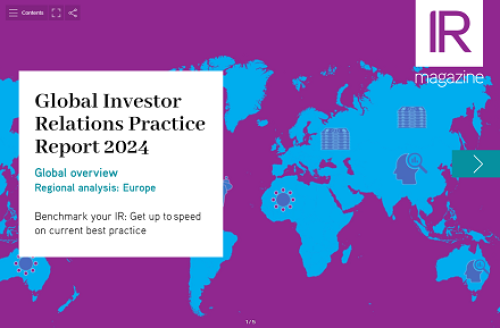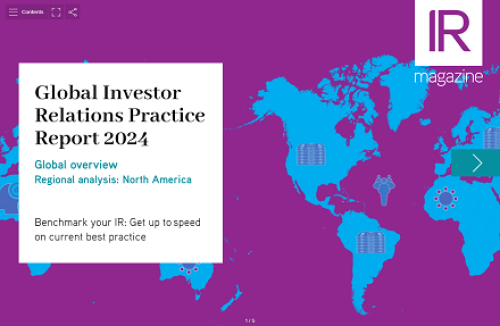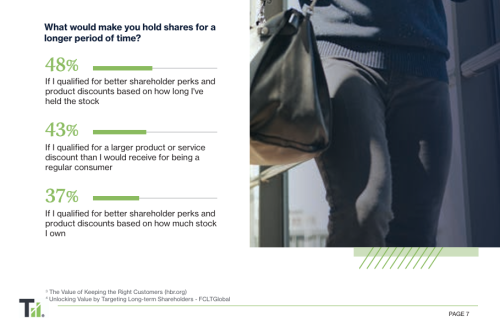New research shows companies can discourage short-sellers by offering more investor/analyst site visits.
Sampling firms listed on the Shenzhen Stock Exchange in 2009-2019, Chinese investigators find that, on average, a firm with one site visit per year experiences 10 percent less short-sales volume (on shares outstanding) in the following year than firms offering no visits.
 ‘Company site visits have a powerful signaling effect and can, eventually, reduce the probability of short-sales,’ study co-author Siyuan Yan, assistant professor in finance at the East China University of Science and Technology, tells IR Magazine. ‘Firms facing short-selling threats should adopt an active investor relations strategy aimed at reconstructing market perceptions and sustaining investor alignment.’
‘Company site visits have a powerful signaling effect and can, eventually, reduce the probability of short-sales,’ study co-author Siyuan Yan, assistant professor in finance at the East China University of Science and Technology, tells IR Magazine. ‘Firms facing short-selling threats should adopt an active investor relations strategy aimed at reconstructing market perceptions and sustaining investor alignment.’
Notably, the researchers find companies with temporary negative earnings the least willing to offer site visits. ‘Yet those are the firms that should most intensify direct, in-person communication with their investors,’ Yan adds. ‘Doing nothing just sends the wrong signal to the market.’
Along with mitigating the effects of short-selling, the researchers find firms offering more site visits got more and better press coverage.
‘While site visits are in-person communication, they also have spillover effects on informational intermediaries in the capital market,’ observes Yan. ‘Our finding helps explain how IR activities can drive desired information to individual market participants.’
A separate group of investigators finds that Chinese analysts who conduct a site visit on the day of a lunar eclipse subsequently issue more pessimistic earnings forecasts. Naturally, the greater the lunar occlusion, the darker the outlook.
How to handle online criticism
Done right, social media can be a powerful CSR communications tool. Its two-way nature provides the perfect medium to nurture trust and grow sustained shareholder support.
But this open dialectic is a double-edged sword: social media also provides a fecund breeding ground for other people’s opinions – many of them spiteful. Get social media wrong, and you’d have best kept your fingers off Twitter entirely.
Indeed, perhaps for fear of getting burned, relatively few firms let their CSR communications play with social media. Of those that do, many get it wrong. Now, two English scientists say they’ve figured out a sure-fire way to get it right and reap the full benefits of social media for CSR communications.
 ‘Lots of companies use social media but not necessarily in a way that welcomes dialogue,’ says Anthony Grimes, senior lecturer in marketing at the University of Sheffield. ‘Many simply ignore negative comments about their CSR communications. We thought if companies were more confident about what an effective response looks like, they’d be more willing to engage.’
‘Lots of companies use social media but not necessarily in a way that welcomes dialogue,’ says Anthony Grimes, senior lecturer in marketing at the University of Sheffield. ‘Many simply ignore negative comments about their CSR communications. We thought if companies were more confident about what an effective response looks like, they’d be more willing to engage.’
To discover the most effective response to a bad online review, Grimes and his colleague Katie Dunn, a senior lecturer in marketing at Sheffield Hallam University, conducted an experimental examination of two central characteristics of a company’s response: the speed at which it is made and its content – specifically its ‘symmetry’, either implying an intention to change as a result of the stakeholder comment, or defending the firm’s existing policies.
‘We find that, in isolation, highly symmetrical responses have only a small effect on audience perception of organizational legitimacy and CSR,’ says Dunn, who makes the same observation about speedy responses.
 ‘The only type of response that truly, fully mitigates the detrimental impact of negative user-generated comments is one that is both fast and symmetrical. The power of the additive effect came as something of a surprise.’
‘The only type of response that truly, fully mitigates the detrimental impact of negative user-generated comments is one that is both fast and symmetrical. The power of the additive effect came as something of a surprise.’
The study authors recommend IROs develop templates to facilitate the quick construction of high-symmetry responses. ‘At the same time, companies need to have a really clear plan about who is responsible for identifying and responding to negative posts,’ concludes Dunn.
‘That way companies are better equipped to maximize the potential value and minimize the considerable risks of communicating their CSR activity within social media.’
This article appeared in the Fall 2022 issue of IR Magazine










